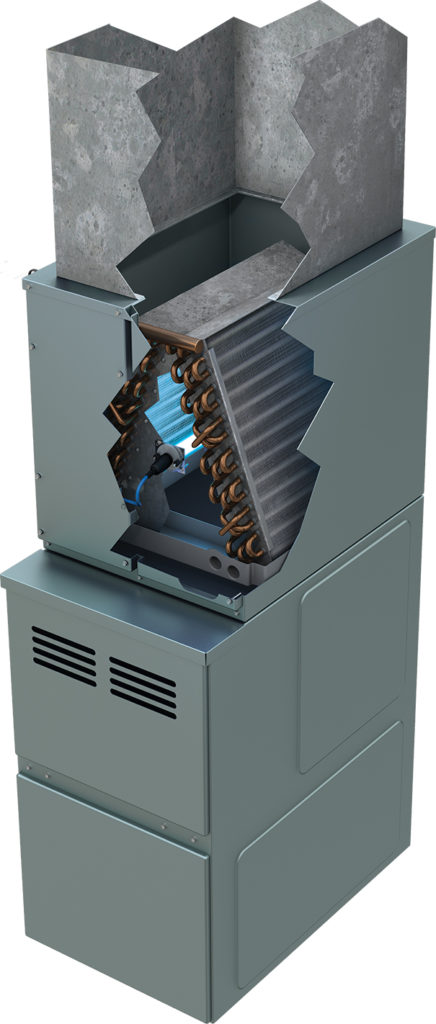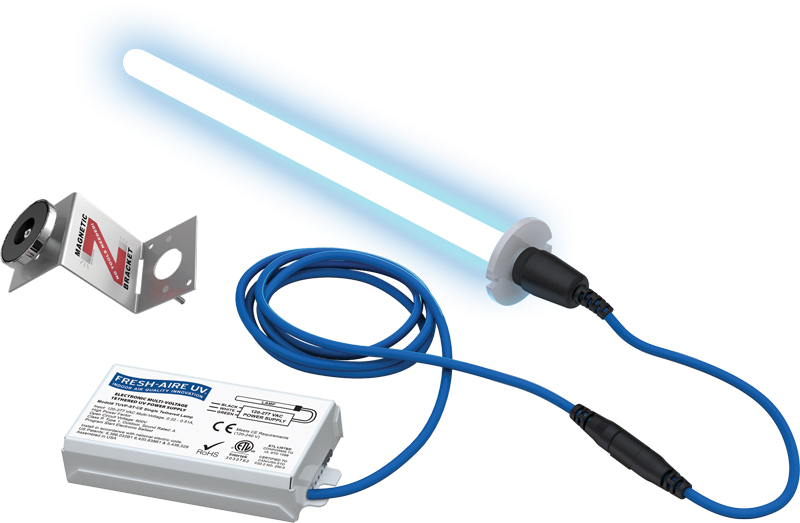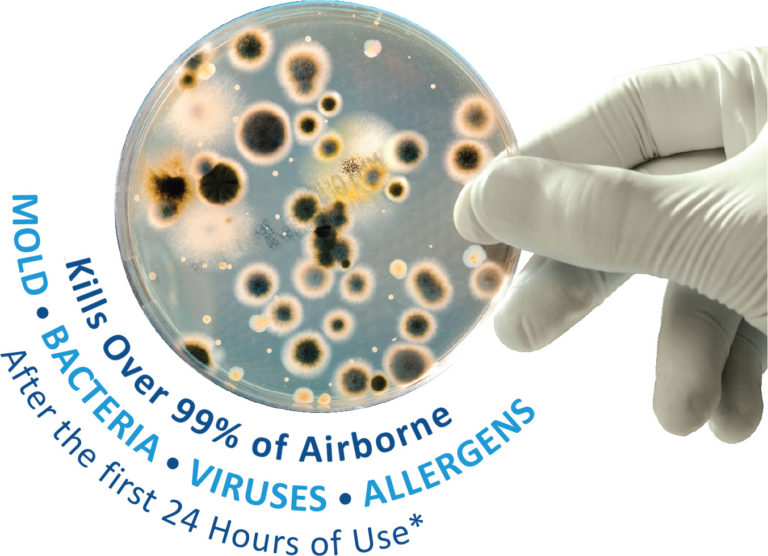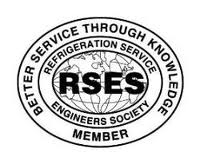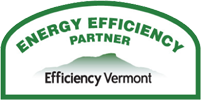
Installed In-duct UV-C lights come with placards which denote the install date and the next UV-C lamp replacement date.
In-duct germicidal UV-C (aka UVGI) offers building and homeowners a means of disinfecting the air in their environment from viruses, bacteria, and fungal spores without chemicals, VOC’s, or ozone. Many folks are conscious of the quality of their drinking water, but what about the air in your home? In-Duct Germicidal UV-C lights offer constant disinfection of your HVAC system’s airstream. When your HVAC system is actively heating or cooling your house, or even if you just have the fan on from the thermostat, all of the air in your house is being pulled through your HVAC system and redistributed throughout the structure. Are you confident that you know what you’re breathing?
Both the CDC and ASHRAE (American Society of Heating, Refrigeration, & Air-Conditioning Engineers) recognize the effectiveness of UV-C germicidal lights for controlling airborne infection, including inactivation of the SARS-COV-2 virus, as well as other viruses, bacteria, and fungal spores, while improving indoor air quality. ASHRAE’s position document on airborne infectious diseases outlines 3 proven methods for controlling airborne infection:
- Ventilation (by means of outdoor fresh air ventilation)
- Particle Filtration (by means of HVAC system filters. MERV 8 filters are an industry standard, however higher MERV-rated filters filter smaller particles more effectively. MERV 13 filters are recommended for commercial spaces, in addition to outdoor air dilution and UV-C disinfection.)
- Germicidal UV-C (by means of installed UV-C lights in HVAC airstream distribution, HVAC coil/surface irradiation, or via Upper-Room UV-C application)
A combination of all 3 methods provides a multifaceted approach for inactivating surface and airborne microorganisms. UV-C by itself inactivates but does not remove microbes, which is why filtration and ventilation are so important. Filtration’s role in the system is to capture particles, while ventilation provides removal of recirculated air and a supply of fresh outdoor air.
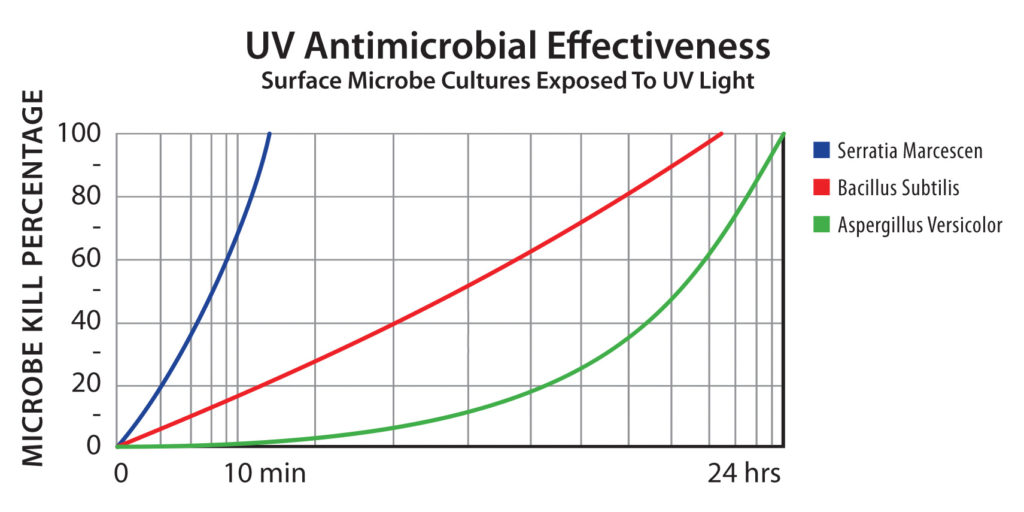
“The entire ultraviolet (UV) spectrum can kill or inactivate microorganisms, but UV-C energy
– ASHRAE Position Document on Infectious Aerosols (April 2020)
(in the wavelengths from 200 to 280 nm) provides the most germicidal effect, with 265 nm being
the optimum wavelength. The majority of modern UVGI lamps create UV-C energy at a nearoptimum 254 nm wavelength. UVGI inactivates microorganisms by damaging the structure of
nucleic acids and proteins with the effectiveness dependent upon the UV dose and the susceptibility of the microorganism. The safety of UV-C is well known.”
At GSK, our installed UV-C lamp systems have been third-party tested and proven to inactivate 96.5-99.99% of the SARS-COV-2 virus within 0.5-3 seconds of exposure to the UV-C wavelength. UV-C systems typically inactivate viruses, bacteria, and spores at a 90% or higher “kill” ratio. UV-C light works through a process known as photodimerization, which destroys the nucleic acids and damages the genes of cells through electromagnetic damage. This process effectively prevents microorganisms from infecting and reproducing in the air and surfaces treated by the UV-C light.
It’s important to note, that any “air cleaner” or UV-C light installed in your home should be ozone-free. There are many air cleaners and UV lights that produce ozone intentionally or as a by-product of operation. Ozone is a known lung irritant, classified indoor air pollutant, and is harmful to your health. At GSK we never recommend any client buy or use indoor air quality products that produce ozone! All of our indoor air quality products are 100% ozone free!
UV-C lamps require annual or every 2-year replacement, depending on the model and application. Clean air is a premium, so to keep your air clean it’s essential that your HVAC system is getting frequent maintenance (at least twice per year), this will ensure that your system’s air filters don’t become a source of indoor pollution, negating some of the effects of your UV-C.

Are you interested in breathing cleaner air without using toxic VOC’s, chemicals, or ozone? Consider having GSK install UV-C light technology in your HVAC system!
Resources:
- http://www.uvresources.com/blog/ashrae-weighs-in-on-health-benefits-of-uv-c/
- https://www.ashrae.org/file%20library/about/position%20documents/pd_infectiousaerosols_2020.pdf
- https://www.ashrae.org/file%20library/about/position%20documents/filtration-and-air-cleaning-pd-feb.2.2021.pdf
- https://www.energyvanguard.com/blog/2-reasons-to-avoid-most-electronic-air-cleaners/
- https://www.pmengineer.com/articles/95256-germicidal-uv-c-disinfecting-air-and-surfaces-for-decades?oly_enc_id=3425J2602790F5X
